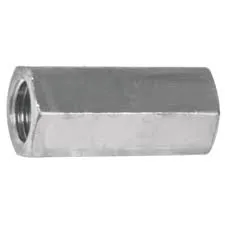-
Cangzhou Yulong Steel Co., Ltd.
-
Phone:
+86 13303177267 -
Email:
admin@ylsteelfittings.com
- English
- Arabic
- Italian
- Spanish
- Portuguese
- German
- kazakh
- Persian
- Greek
- French
- Russian
- Polish
- Thai
- Indonesian
- Vietnamese
- Zulu
- Korean
- Uzbek
- Hindi
- Serbian
- Malay
- Ukrainian
- Gujarati
- Haitian Creole
- hausa
- hawaiian
- Hebrew
- Miao
- Hungarian
- Icelandic
- igbo
- irish
- Japanese
- Javanese
- Kannada
- Khmer
- Rwandese
- Afrikaans
- Albanian
- Amharic
- Armenian
- Azerbaijani
- Basque
- Belarusian
- Bengali
- Bosnian
- Bulgarian
- Catalan
- Cebuano
- China
- China (Taiwan)
- Corsican
- Croatian
- Czech
- Danish
- Esperanto
- Estonian
- Finnish
- Frisian
- Galician
- Georgian
- Kurdish
- Kyrgyz
- Lao
- Latin
- Latvian
- Lithuanian
- Luxembourgish
- Macedonian
- Malgashi
- Malayalam
- Maltese
- Maori
- Marathi
- Mongolian
- Myanmar
- Nepali
- Norwegian
- Norwegian
- Occitan
- Pashto
- Dutch
- Punjabi
- Romanian
- Samoan
- Scottish Gaelic
- Sesotho
- Shona
- Sindhi
- Sinhala
- Slovak
- Slovenian
- Somali
- Sundanese
- Swahili
- Swedish
- Tagalog
- Tajik
- Tamil
- Tatar
- Telugu
- Turkish
- Turkmen
- Urdu
- Uighur
- Welsh
- Bantu
- Yiddish
- Yoruba

Oct . 21, 2024 18:06 Back to list
Guidelines for Low-Temperature Service Steel Pipes and Fittings in Various Applications
Understanding ASME A333 Specification for Pipe for Low-Temperature Applications
The ASME A333 standard, formally known as Specification for Seamless and Welded Steel Pipe for Low-Temperature Service, is crucial in the manufacturing and use of steel piping intended for low-temperature applications. This standard outlines the requirements for carbon and alloy steel pipes to ensure safety, reliability, and performance in extreme cold environments, which makes it pivotal for industries like oil and gas, chemical processing, and cryogenic applications.
Overview of ASME A333
The ASME A333 specification applies to seamless and welded pipes made from carbon and alloy steel, designed to operate at temperatures down to -450 degrees Fahrenheit (-268 degrees Celsius). The standard addresses various grades of steel, the most common of which include Grades 1, 3, 4, 6, 7, 8, and 9. Each grade has specific chemical composition requirements and mechanical properties, ensuring their suitability for low-temperature service.
Key Requirements
One of the primary objectives of ASME A333 is to ensure the material’s integrity and its ability to withstand the demands of low-temperature environments. This involves rigorous testing and inspection protocols which include
1. Chemical Composition Each steel grade under ASME A333 must meet defined chemical composition limits. This ensures that the steel achieves the necessary properties for low-temperature applications, including toughness and ductility.
2. Mechanical Properties The standard specifies minimum yield strength and tensile strength requirements that pipes must meet to be classified under a certain grade. The mechanical testing must confirm that the materials perform adequately under specified conditions.
asme a333

3. Impact Testing To assess the toughness of the steel, especially at low temperatures, impact tests such as Charpy V-notch tests are mandatory. These evaluations determine how the material behaves under sudden stress or impacts, which is crucial for preventing brittle fracture.
4. Welding and Fabrication ASME A333 also includes guidelines for welding procedures. Whether using seamless or welded pipe, the standard emphasizes the importance of ensuring the welds maintain the integrity and mechanical properties of the pipe system.
Applications of ASME A333 Pipes
Pipes that comply with ASME A333 are employed in various industries where low-temperature operation is critical. Common applications include
- Cryogenic Systems Used extensively in the storage and transport of liquefied gases like LNG (Liquefied Natural Gas) and Liquid Oxygen. - Oil and Gas Exploration Low-temperature service lines that transport oil and gas from remote drilling locations where the temperatures can drop significantly. - Chemical Processing Equipment that functions at low temperatures, such as reactors and storage tanks, benefits from the use of ASME A333 pipes to ensure safety and performance.
Conclusion
Understanding and adhering to ASME A333 is essential for engineers, designers, and fabricators working in industries that involve low-temperature processes. The standard not only helps in selecting the right materials but also in ensuring that the piping systems operate safely and efficiently in extreme conditions. By following the specifications laid out in ASME A333, stakeholders can mitigate the risks associated with low-temperature operations, enhance safety, and prolong the lifespan of their infrastructure. Compliance with this standard is not just about meeting regulations; it reflects an organization's commitment to quality, safety, and operational excellence in the challenging landscape of low-temperature applications.
Latest news
-
ANSI 150P SS304 SO FLANGE
NewsFeb.14,2025
-
ASTM A333GR6 STEEL PIPE
NewsJan.20,2025
-
ANSI B16.5 WELDING NECK FLANGE
NewsJan.15,2026
-
ANSI B16.5 SLIP-ON FLANGE
NewsApr.19,2024
-
SABS 1123 FLANGE
NewsJan.15,2025
-
DIN86044 PLATE FLANGE
NewsApr.19,2024
-
DIN2527 BLIND FLANGE
NewsApr.12,2024
-
JIS B2311 Butt-Welding Fittings LR/SR 45°/90° /180°Seamless/Weld
NewsApr.23,2024











